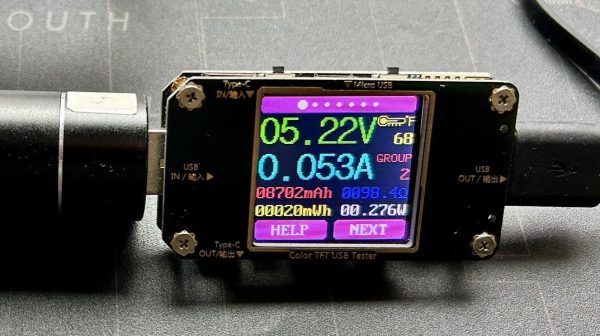A hefty portable power bank is a handy thing to DIY, but one needs to get their hands on a number of matching lithium-ion cells to make it happen. [Chris Doel] points out an easy solution: salvage them from disposable vapes and build a solid 35-cell power bank. Single use devices? Not on his watch!
[Chris] has made it his mission to build useful things like power banks out of cells harvested from disposable vapes. He finds them — hundreds of them — on the ground or in bins (especially after events like music festivals) but has also found that vape shops are more than happy to hand them over if asked. Extracting usable cells is most of the work, and [Chris] has refined safely doing so into an art.

Many different vapes use the same cell types on the inside, and once one has 35 identical cells in healthy condition it’s just a matter of using a compatible 3D-printed enclosure with two PCBs to connect the cells, and a pre-made board handles the power bank functionality, including recharging.
We’d like to highlight a few design features that strike us as interesting. One is the three little bendy “wings” that cradle each cell, ensuring cells are centered and held snugly even if they aren’t exactly the right size. Another is the use of spring terminals to avoid the need to solder to individual cells. The PCBs themselves also double as cell balancers, providing a way to passively balance all 35 cells and ensure they are at the same voltage level during initial construction. After the cells are confirmed to be balanced, a solder jumper near each terminal is closed to bypass that functionality for final assembly.
The result is a hefty power bank that can power just about anything, and maybe the best part is that it can be opened and individual cells swapped out as they reach the end of their useful life. With an estimated 260 million disposable vapes thrown in the trash every year in the UK alone, each one containing a rechargeable lithium-ion cell, there’s no shortage of cells for an enterprising hacker willing to put in a bit of work.
Power banks not your thing? [Chris] has also created a DIY e-bike battery using salvaged cells, and that’s a money saver right there.
Learn all about it in the video, embedded below. And if you find yourself curious about what exactly goes on in a lithium-ion battery, let our own Arya Voronova tell you all about it.
Continue reading “Save Cells From The Landfill, Get A Power Bank For Your Troubles”






![USB to Dupont adapter by [PROSCH]](https://hackaday.com/wp-content/uploads/2022/01/2022-01-01-USB-to-DuPont-adapter-feat.jpg?w=600&h=450)













